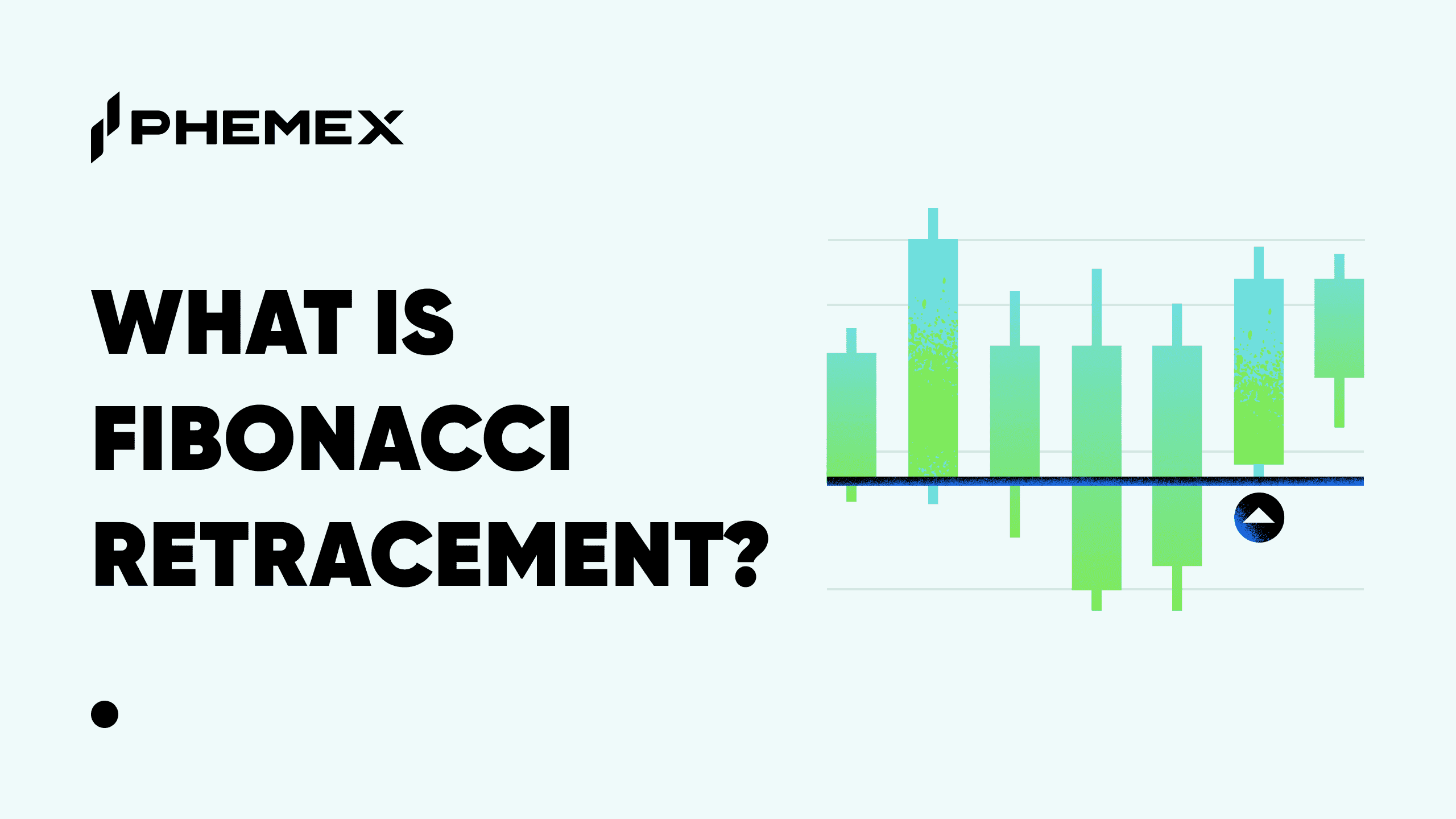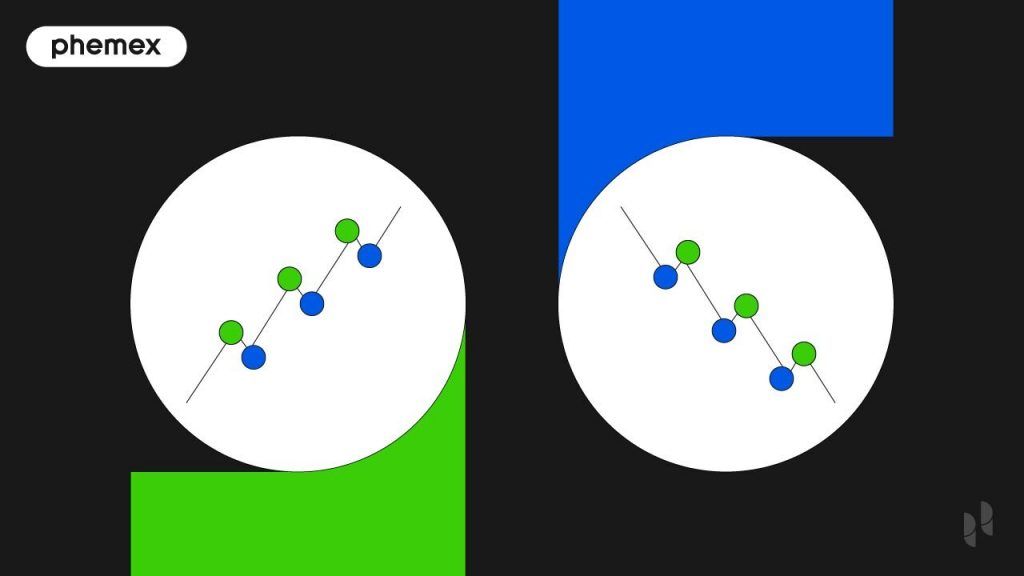The Choppiness Index (CHOP/CI) is an indicator that helps cryptocurrency traders determine whether the market is favorably shifting by determining past and current market trends. It’s simple, easy to understand, commonly used, and easy to read — useful for novices and professionals alike.

What Is the Choppiness Index?
The Choppiness Index indicates whether a choppy market exists. A choppy market refers to a market condition where the crypto prices swing up and down substantially, either in the short term or long term. In other words, a choppy market is a period of volatility where a trend is generally absent.
The Choppiness Index has become a valuable metric for determining whether a Bitcoin (BTC) price breakout is happening. It catches the early stages of a market change, helping traders trade based on potential breakouts rather than chance.
Here is an example of the Choppiness Index indicator on Phemex, showing 1-day trends for BTC / USD. The Choppiness Index is the blue graph line titled CHOP that is displayed at the bottom of the chart – showing a choppy market.
 The Choppiness Index indicator showing BTC/USD daily trends since November 2021, showing a choppy market (otherwise known as consolidation).
The Choppiness Index indicator showing BTC/USD daily trends since November 2021, showing a choppy market (otherwise known as consolidation).
The index’s values oscillate between 0 and 100, while the time frame used is usually set within a 14-day period. When the index oscillates towards 100, it indicates the market is in sideways movement where the choppiness level is high. In contrast, when the index oscillates towards 0, it means the market is trending where the choppiness level is low.
A value of 38.2% or below generally indicates a strong trend (a bullish market) is likely to happen — in other words, a solid signal to maintain positions or invest. Conversely, a ratio of 61.8% or above shows that the market lacks a clear direction, and a new trend could be underway (a bearish market).
When the crypto frequently shows a price series that closes either high or low and doesn’t change for an extended time, it’s neither reversing nor continuing a more significant price trend. This phenomenon is called consolidation. However, if the indicator shows a value of 38.2 or below, a trend will likely emerge.

The Choppiness Index Formula
Cryptocurrency traders use the Fibonacci ratio, otherwise known as the golden ratio, to serve as a threshold for evaluating the market’s trendiness and choppiness. The Fibonacci ratio is a sequence obtained as the sum of the previous two numbers (0, 1, 1, 2, 3, 5, 8, 13, 21, 34, 55, 89, etc.).
The formula calculation process is as follows:
- Sum True Range for the past n periods. True range is taken as the greatest of: the current high minus the current low; the absolute value of the current high minus the previous close; and the absolute value of the current low minus the previous close.
- Divide by the result of the following two steps:
- Calculate the lowest True Low for n periods. True Low means the minimum of today’s low and yesterday’s close.
- Subtract from the highest True High for n periods. True High represents the maximum of today’s high and yesterday’s close.
- Calculate Log10 of the result before multiplying by 100.
- Divide the result by Log10 of n.
The mathematical notation of the formula is as follows:

6 Choppiness Index Trading Strategies
Various trading strategies using the Choppiness Index can help investors outline personal financial goals and dodge potential risks. In addition, the index allows traders to view trading opportunities and patterns objectively. Here are some valuable strategies:
- Define high and low thresholds: When the Choppiness Index is at a high threshold, it’s a sign to pull out of an investment or step back from investing. The likelihood of a competitor gaining popularity is high. On the other hand, lower thresholds of the Choppiness Index show the market is following a definite trend, offering a good time to invest or stay put.
- Notice ending trends: A trend line dropping to 38.2 and below could indicate the direction going off course and potentially ending, otherwise known as a breakout.
- Incorporate indicators: Combine the Choppiness Index with other technical indicators focused on different methods for the same price action. For example, the relative strength indicator (RSI) shows a clearer picture by measuring price change compared to recent highs and lows. When using RSI and Choppiness Index indicators, draw a horizontal line at the RSI’s level 50. When the Choppiness Market index shows above or in between 61.8, stay put. If it drops below 38.2, invest according to the RSI.
- Ride the trend: Disregard false signals showing on primary price patterns. If no more than two readings show above 61.8% and a clear pattern of the crypto’s price is evident, yet it’s not viewable on the Choppiness Index tracker, believe it. False signals pop up because of timing lags, irregularities in data sources, smoothing methods, or the algorithm that the indicator uses.
- Study crypto borders: Not all cryptos stick to the pattern of a choppy market when the metric reaches 61.8 and above, while trending market happens when the metric drops to 38.2 and below. It’s vital to study all price charts to identify misleading indications shown below and above the metric’s borders.
- Consider trading times: Typically, cryptocurrency trades between 8 am and 4 pm, regardless of local time zones. Although the cryptocurrency market is open around the clock, opening and closing trades outside of these hours is pointless. Breakouts usually happen in primetime following the lunch hour.

How To Use The Choppiness Index?
The Choppiness Index indicator is not directional. Instead, it’s used to determine whether cryptocurrencies are choppy or not. For a choppy market, the graph’s line will swing up to the mid-50 line and above, whether short term or long term, showing difficult trading times.
To identify short- and long-term trends, traders can change the chart’s time frame to 5m, 30m, 1H, 4H, 1D, and 1W.
By gauging a trend’s strength, cryptocurrency traders can quickly collect information regarding a price breakout, helping them identify unprofitable endeavors. Breakouts are determined when the crypto’s price surpasses the resistance level with increased volume. However, it should be noted that trading breakouts is a losing strategy for most novice traders.
Numerous indicators are freely accessible for all Phemex members. The example below shows the BTC/USD pair, with BTC trading at $38,358.50.

To find the Choppiness Index indicator, click “Indicators” at the top of the chart. A new window will pop up showing a search bar. Type in “Choppiness Index” and the indicator is easily accessible:

Here is a demonstration of what the Choppiness Index indicator looks like on the weekly BTC/USD chart on Phemex, showing slight trend changes since this time last year:

The chart shows the trend line oscillating between 40 and 60, revealing a state of consolidation. The cryptocurrency was in its riskiest form in May 2021, as indicated by the index rising above the level of 61.8%, showing the market to be undesirable. Nevertheless, BTC trendiness looked promising around March and October of last year, and January of this year. The index hovered around the 40 mark and nearly reached 38.2%, showing an encouraging trend time.
Nevertheless, potential price fluctuations were indicated throughout the year, and they were likely related to the competitors. The chart’s blue line shows a recent uplift from levels 40 to 50, showing a sign of a change within the sector — the market switches between trends and consolidations, proving an unpromising time for the crypto.
Nevertheless, if the Choppiness Index continues settle above the middle point of 50, BTC is expected to remain in a consolidation.
Changing the Choppiness Index Settings
Price deviation is changeable using the indication bar shown on the top left of the chart. Click on the gear symbol at the top of the Choppiness Index graph to input customized price settings.

To change the Upper Limit and the Lower Limit, click Style and type in the required range.
Simple Steps to Using the Choppiness Index
- Pick a trading pair (BTC/USDT, SOL/USDT, ETH/USDT).
- Choose a time frame suitable for personal requirements.
- Click on “Indicators” at the top of the graph.
- Input “Choppiness Index” before clicking to activate.
- Note how the line moves, indicating a strong trend or consolidation.
Choppiness Index Disadvantages
The Choppiness Index is a non-directional, lagging indicator whose values rise when a market is likely to consolidate. It describes recent price trends under the assumption that market conditions stay the same. However, the indicator becomes almost useless in the case of shifting market dynamics, such as a black swan event (an unpredictable event that goes beyond usual expectations).
Choppy conditions can also develop over traders’ reactions with uncertainty regarding news or financial data. For example, prices can rapidly change due to technical glitches or cryptocurrency exchange hacks. Moreover, buyers might feel the need to be of service, assuming the sell-off was an overreaction until other factors become more prominent. As a result, costs are likely to fluctuate until the issue is solved.
Thus, if the Choppiness Index shows a dramatic change by either shifting choppy or not choppy, it’s essential to be suspicious and dig into the potential cause of this sudden difference. Also, it’s not recommended to use the Choppiness Index in isolation due to its inborn limitations. Traders are encouraged to combine this index with other indicators and oscillators, including RSI, the Average Directional Index (ADX) and trend lines, to get a confirmed buy or sell signal.

Conclusion
The Choppiness Index is a valuable and simple indicator. It helps cryptocurrency traders understand current market trends, leading to potential successful investments, and works efficiently on Phemex.
However, despite effectively identifying trends, the Choppiness Index provides little context to help you decide whether certain conditions are a beneficial opportunity. By primarily being useful for converting accumulated historical data, the Choppiness Index indicator lacks the “intelligence” to portray upcoming trends. This can cause traders to miss valuable opportunities over uncertainty.
Regardless, the indicator can lead to more successful trades when compared with other indicators, such as RSI and ADX. This combination of indicators can better illustrate the price direction changes and upcoming signals for uptrends and downtrends.
Read More
- What is Chop Zone: Discover Whether the Market Is Going Sideways
- What is Chande Momentum Oscillator (CMO): An Alternative to the RSI Indicator
- What are Chaikin Indicators: How to “Chaik-Up” Your Market Analysis
- Swing Trading Crypto: What are the Best Indicators for Swing Trading?
- What is Coppock Curve Indicator: Predict the Bitcoin (BTC) Bottom Easily
- What is Chande Kroll Stop: Stop-Loss and Take-Profit Strategy
- How to Read Crypto Charts: Learn Trading Chart Patterns
- Scalping Bitcoin: All you need to know about Scalp trading








